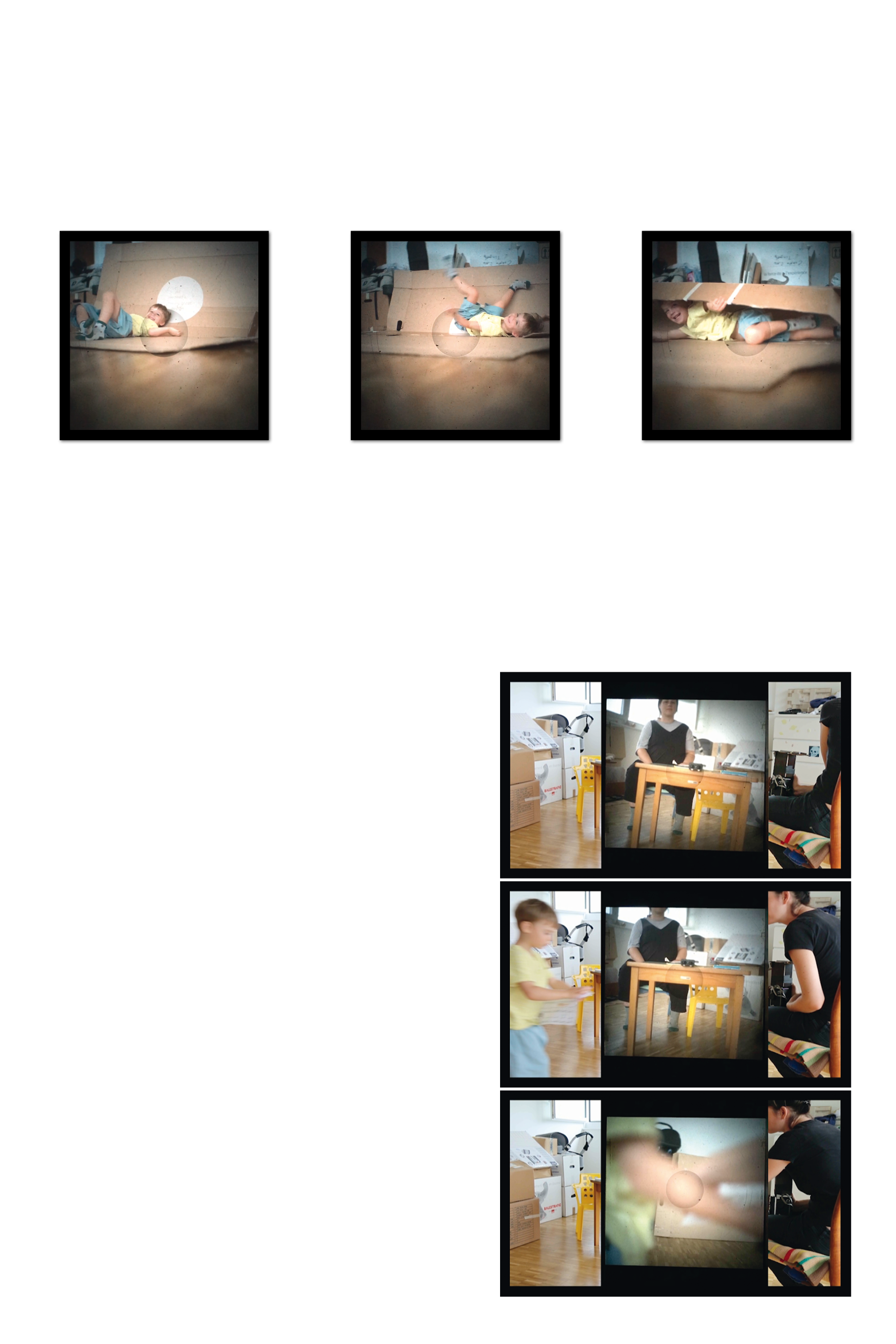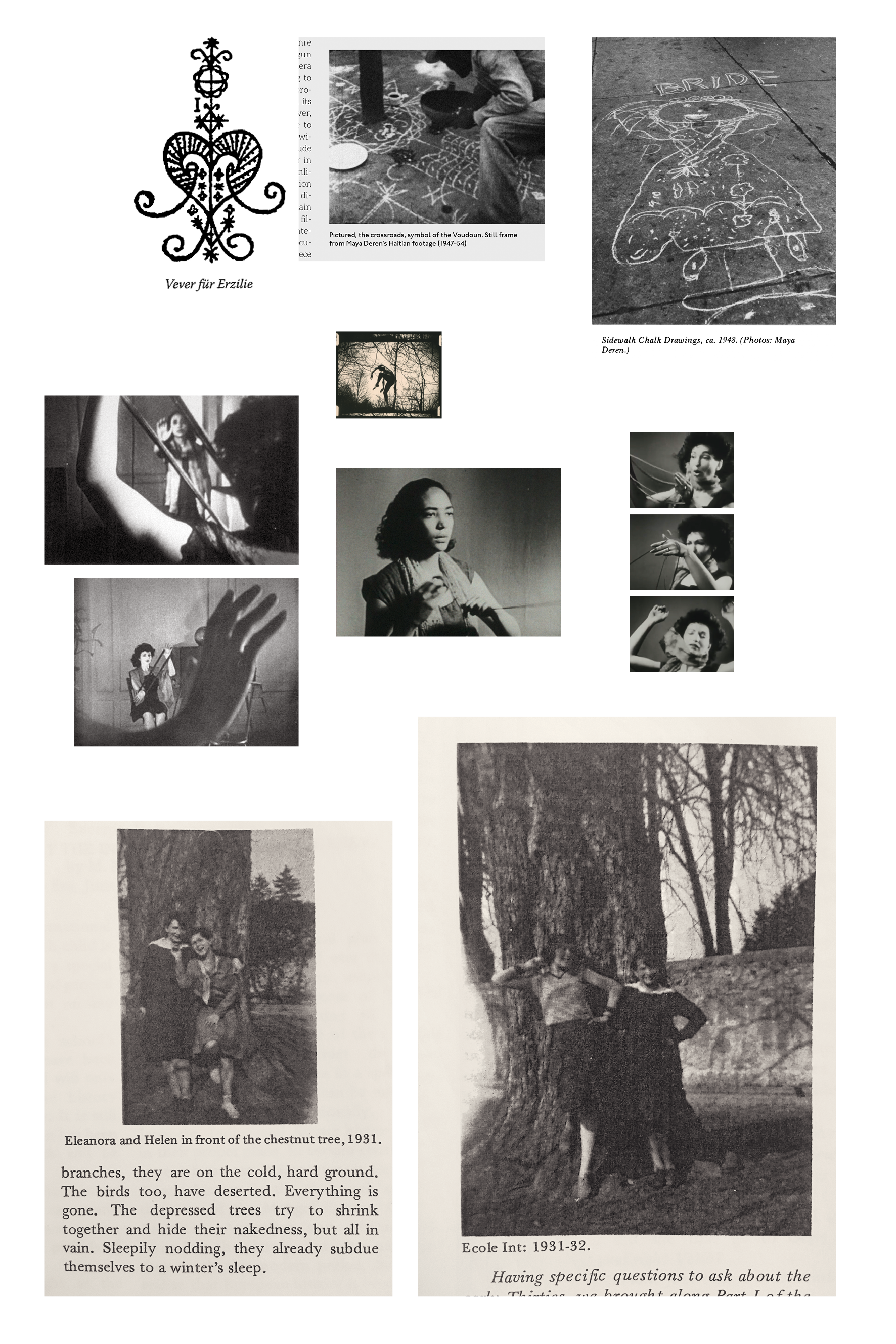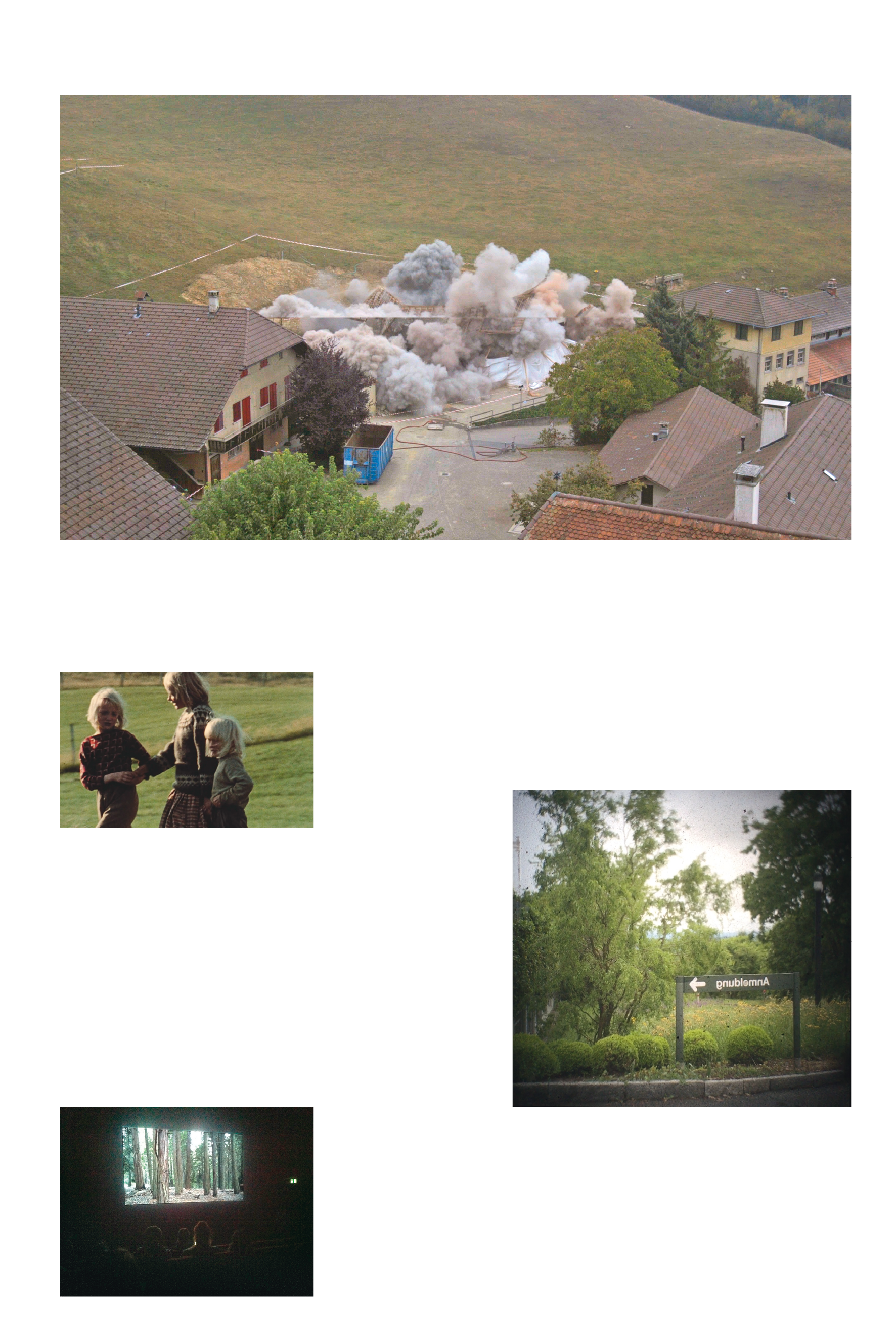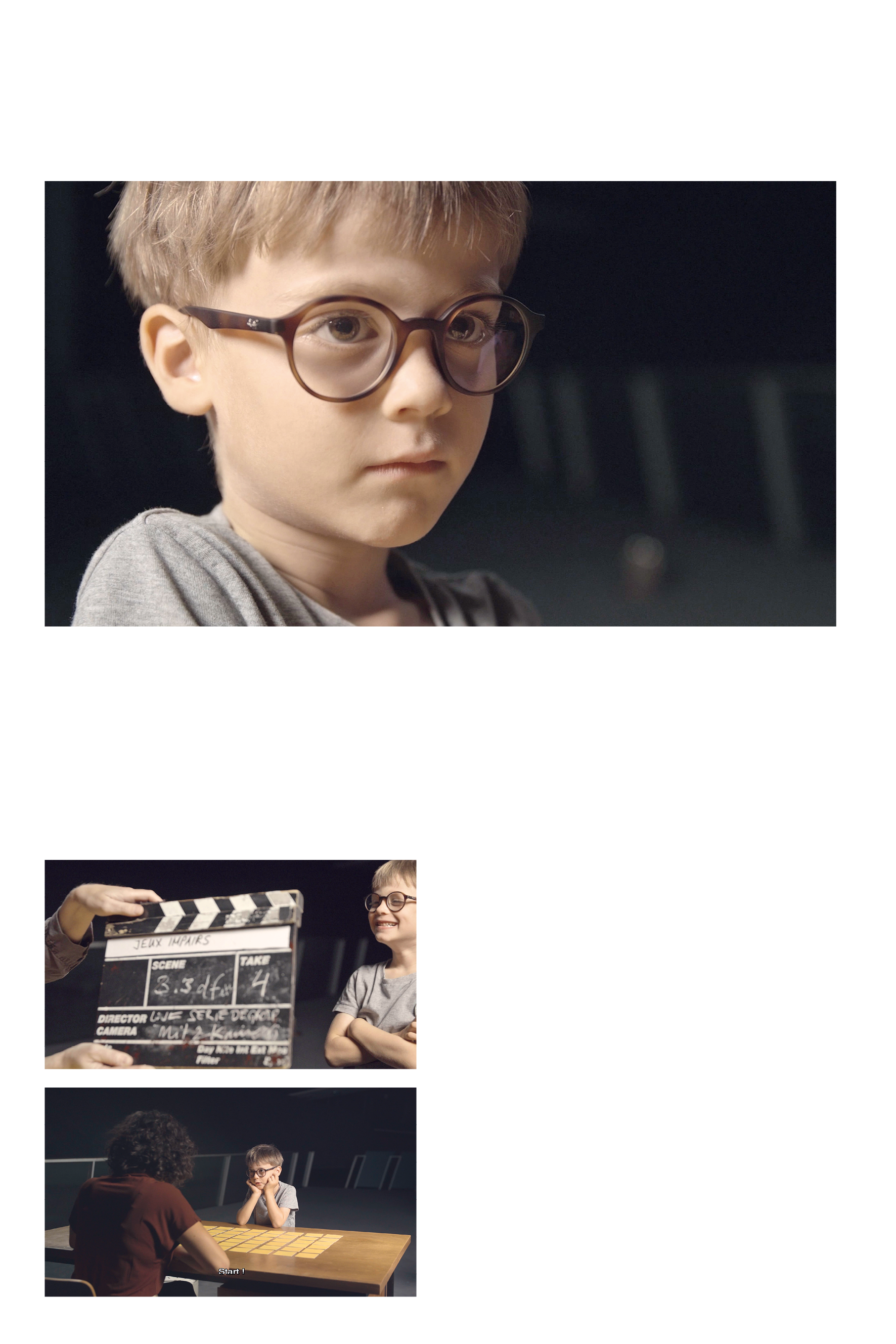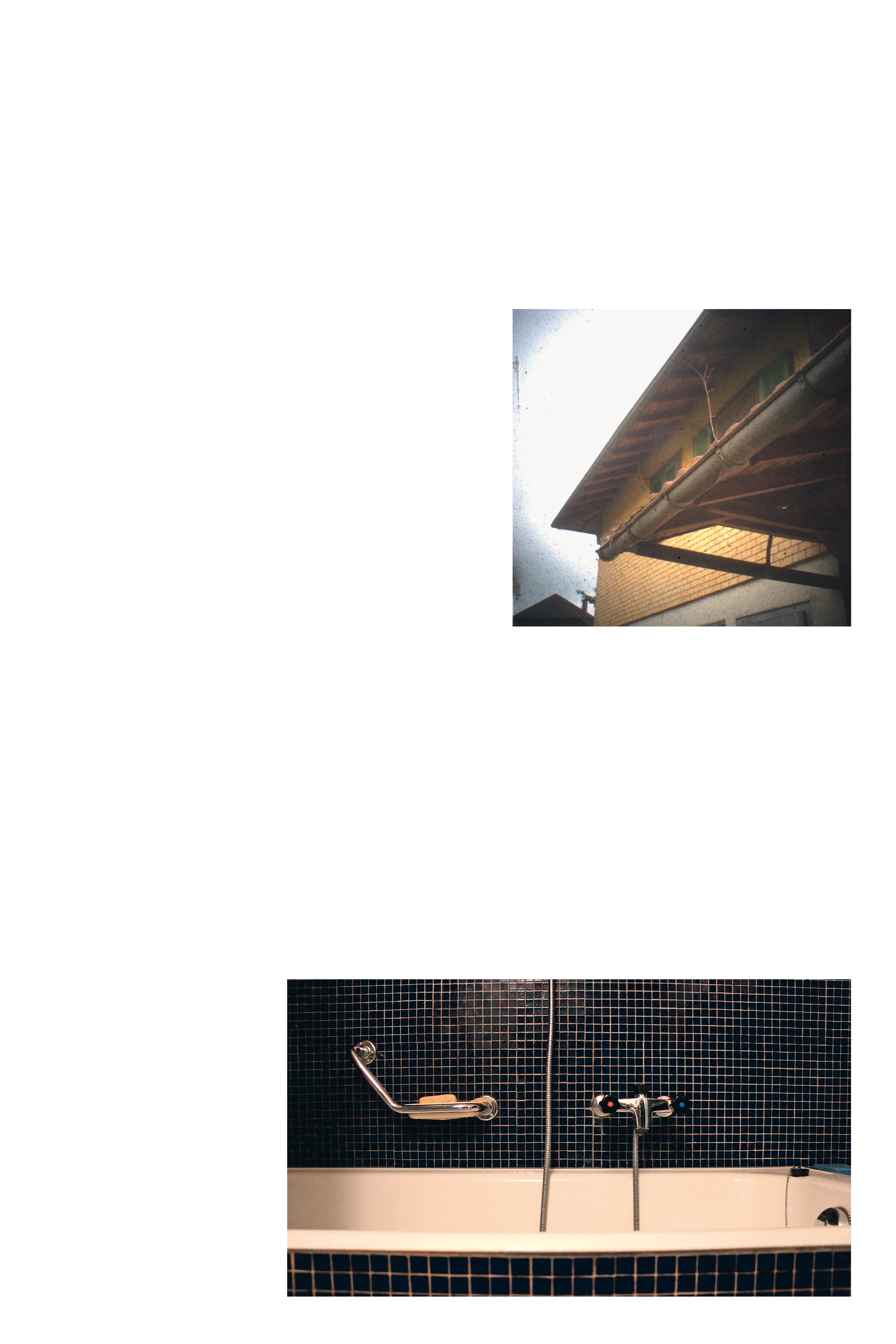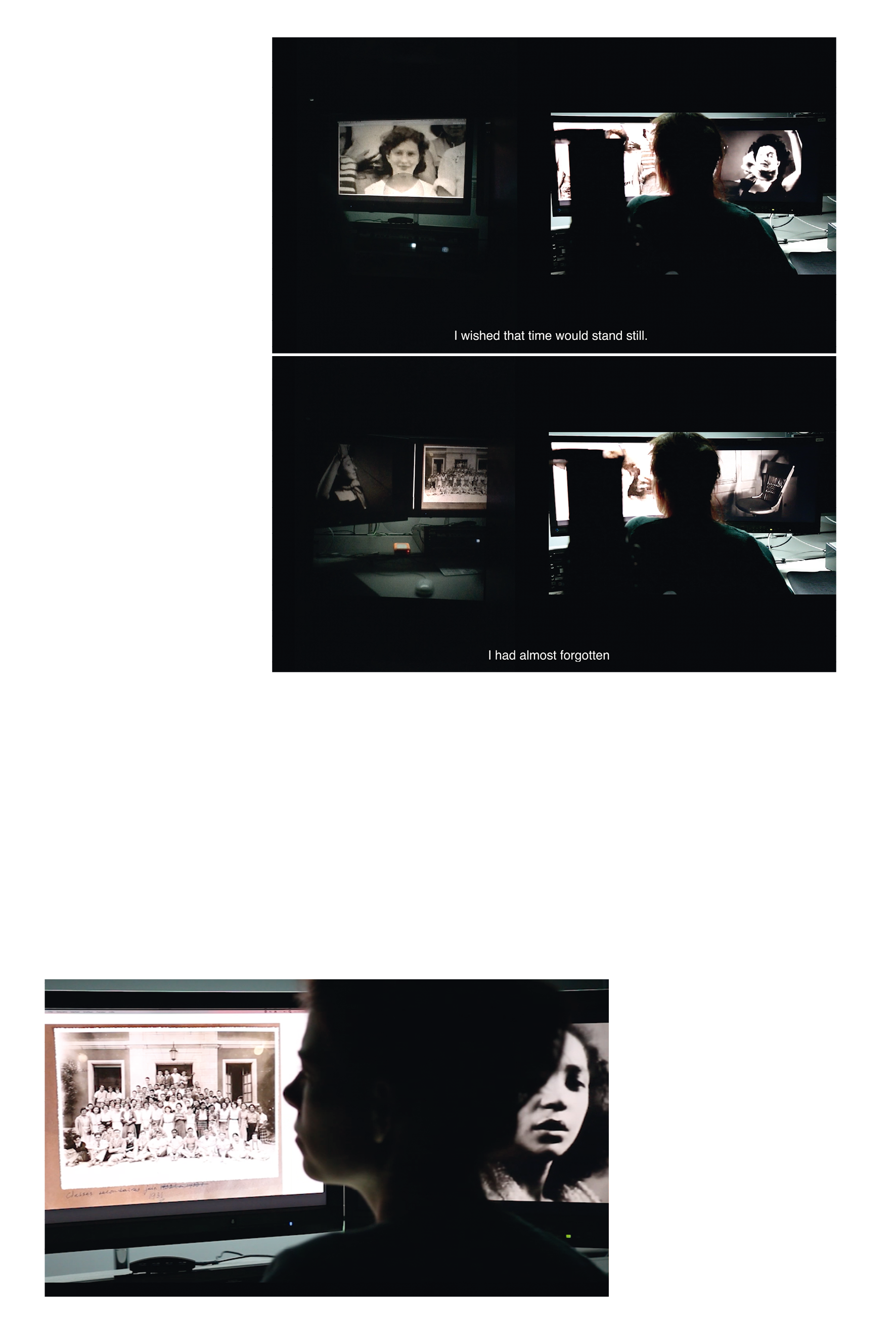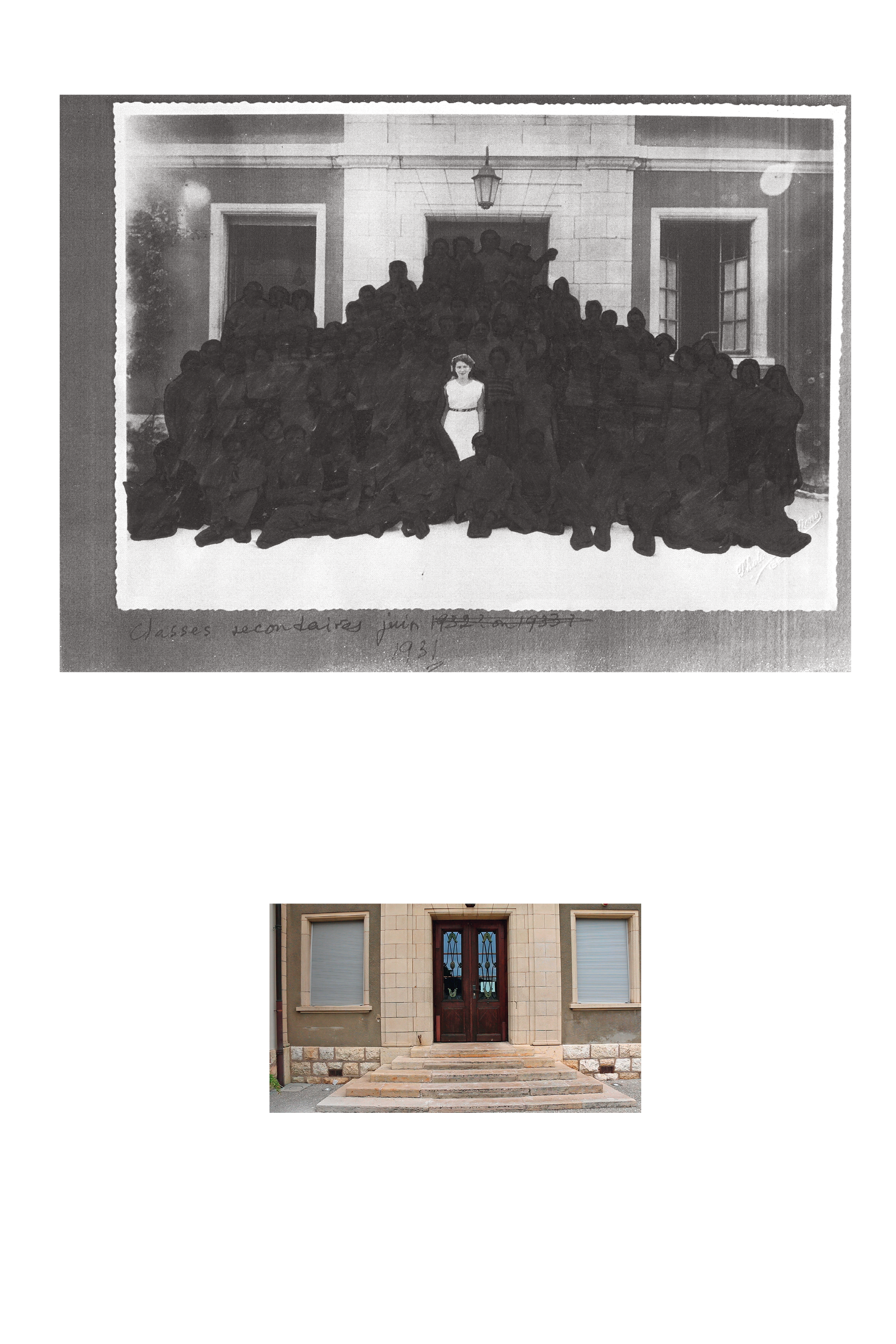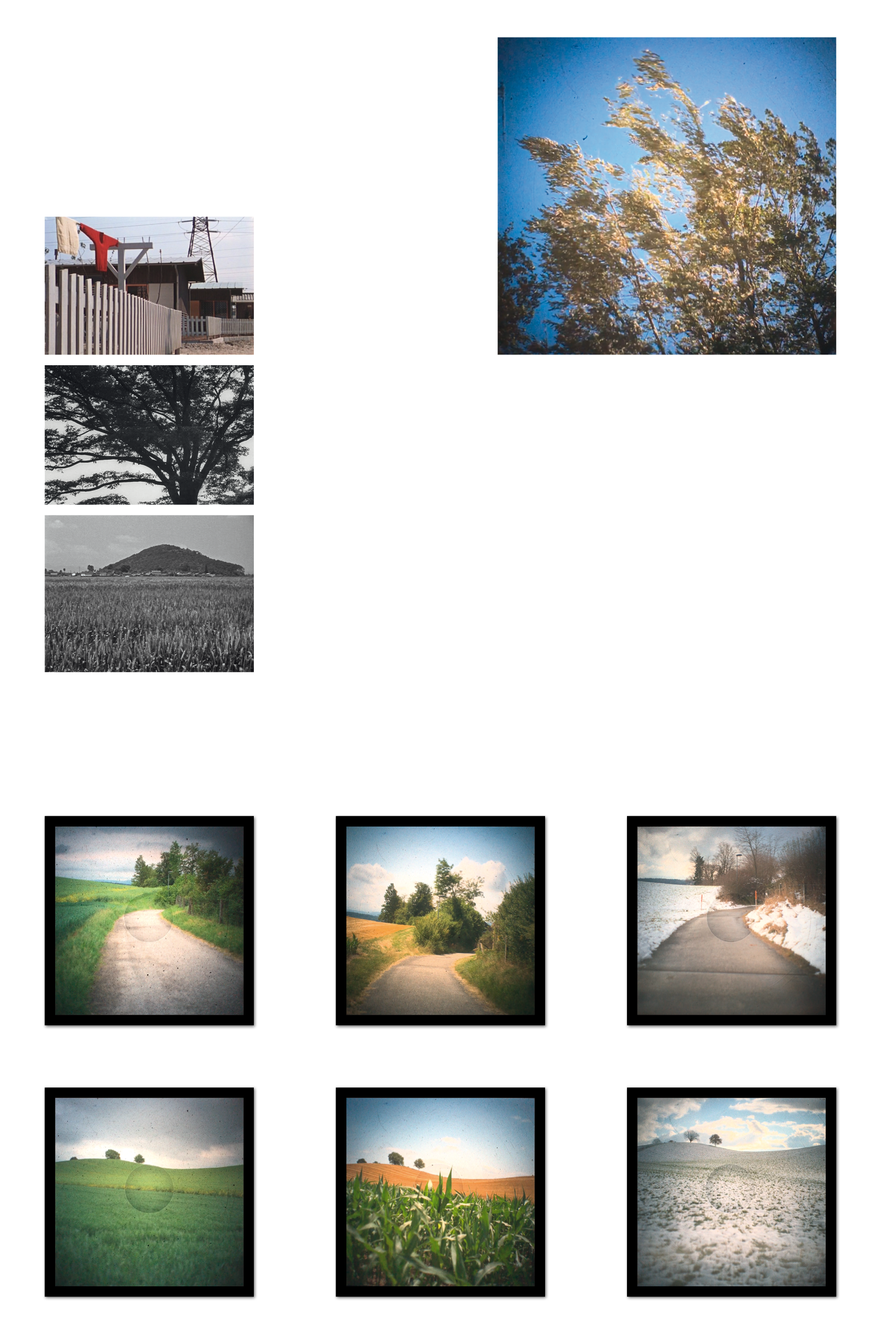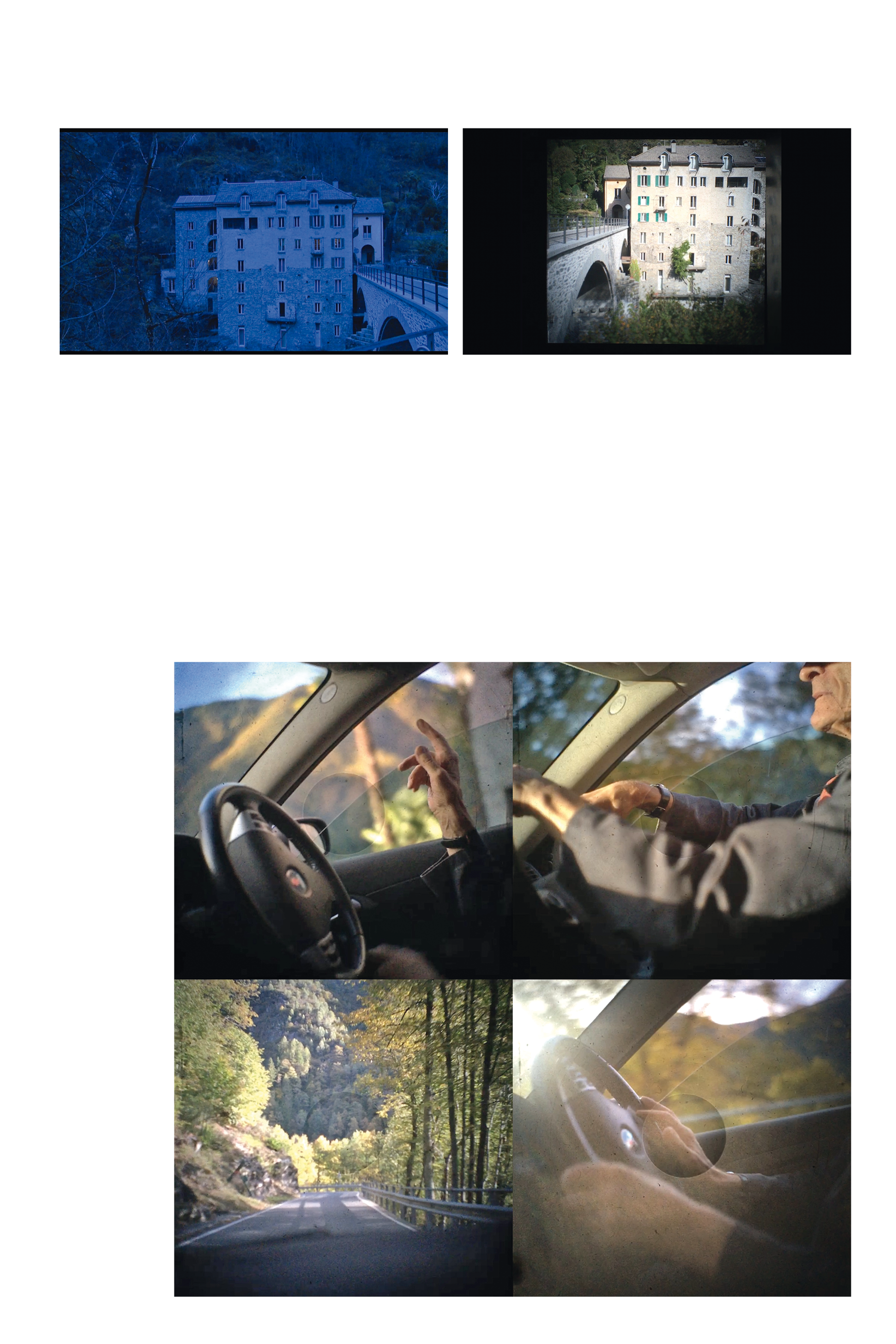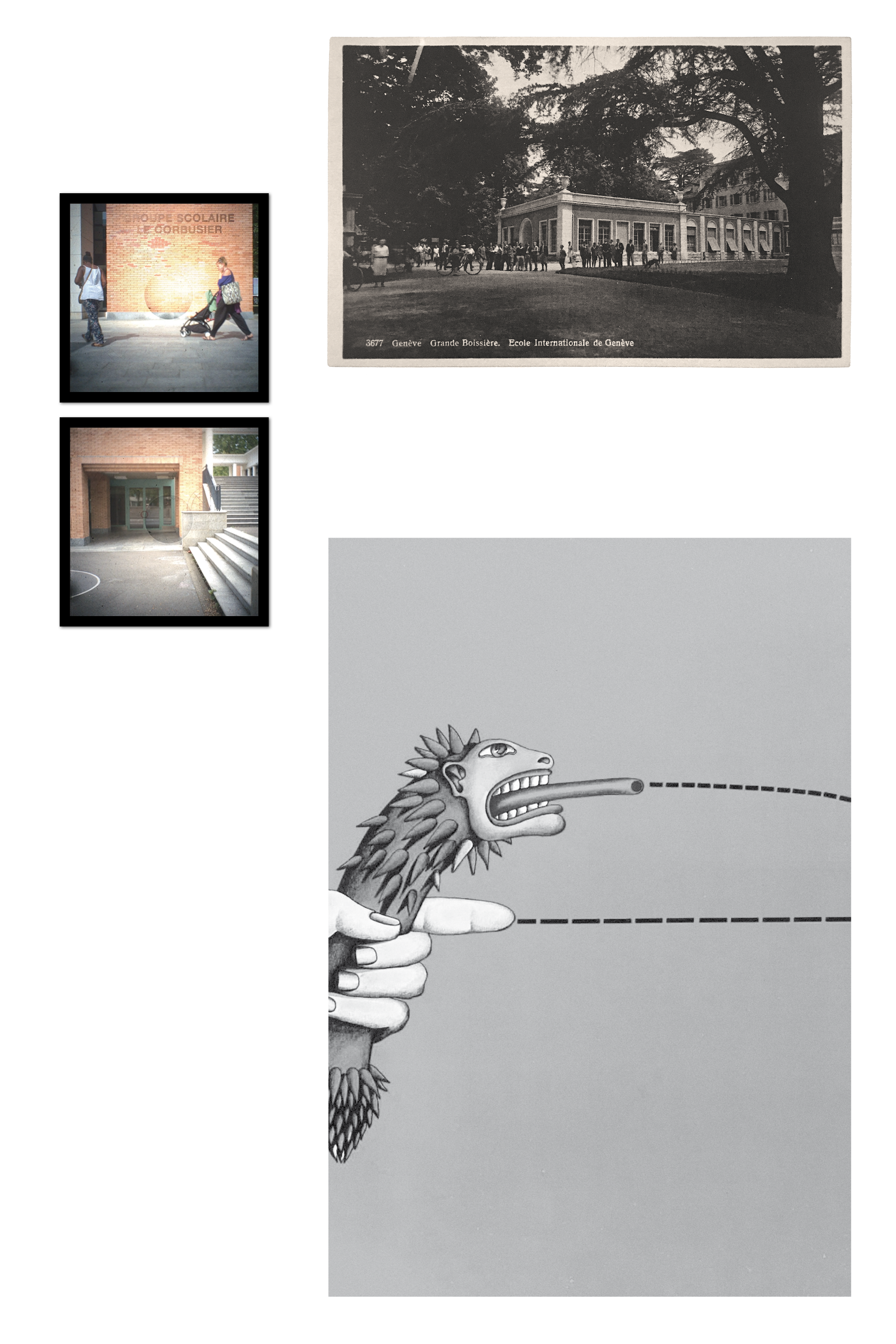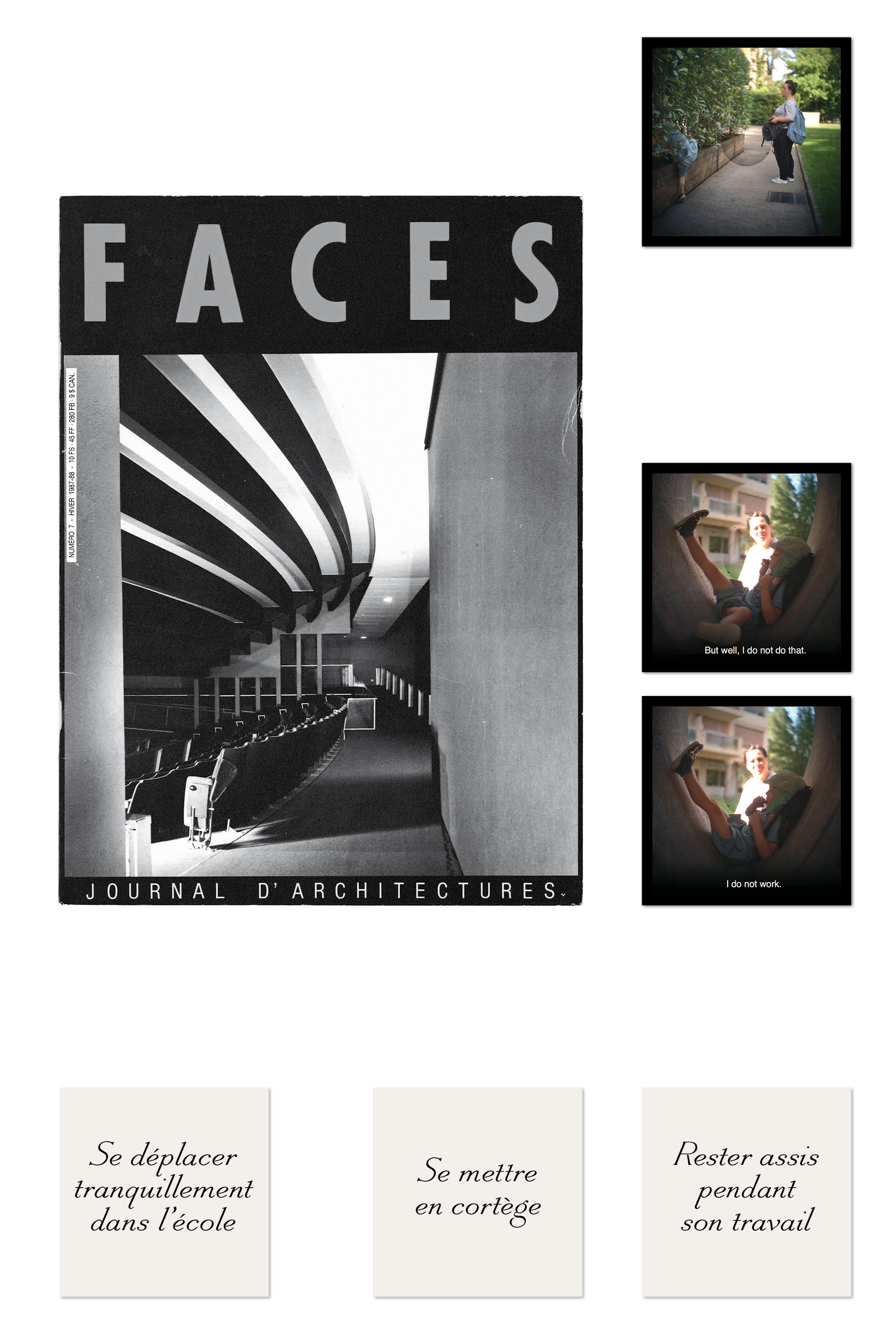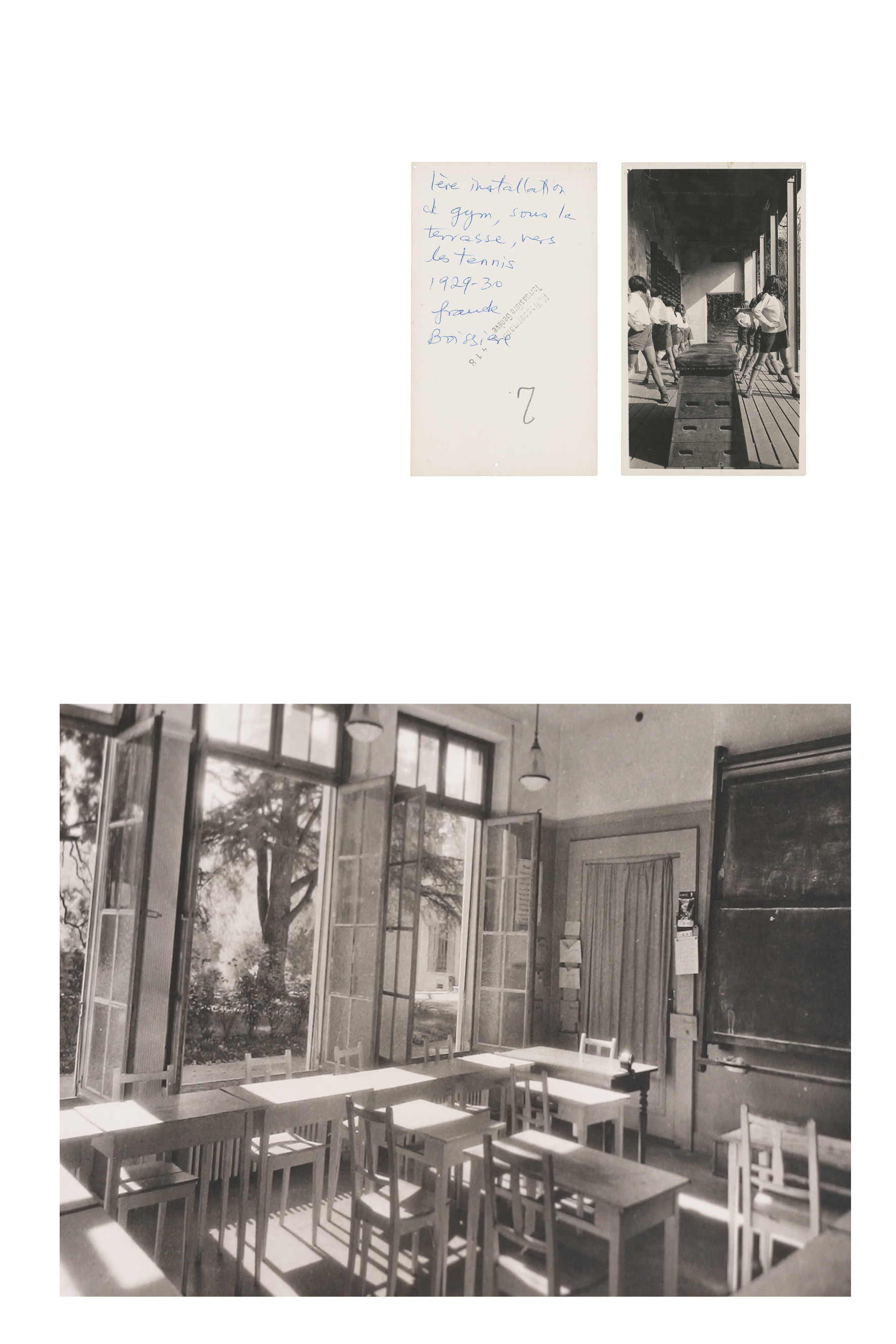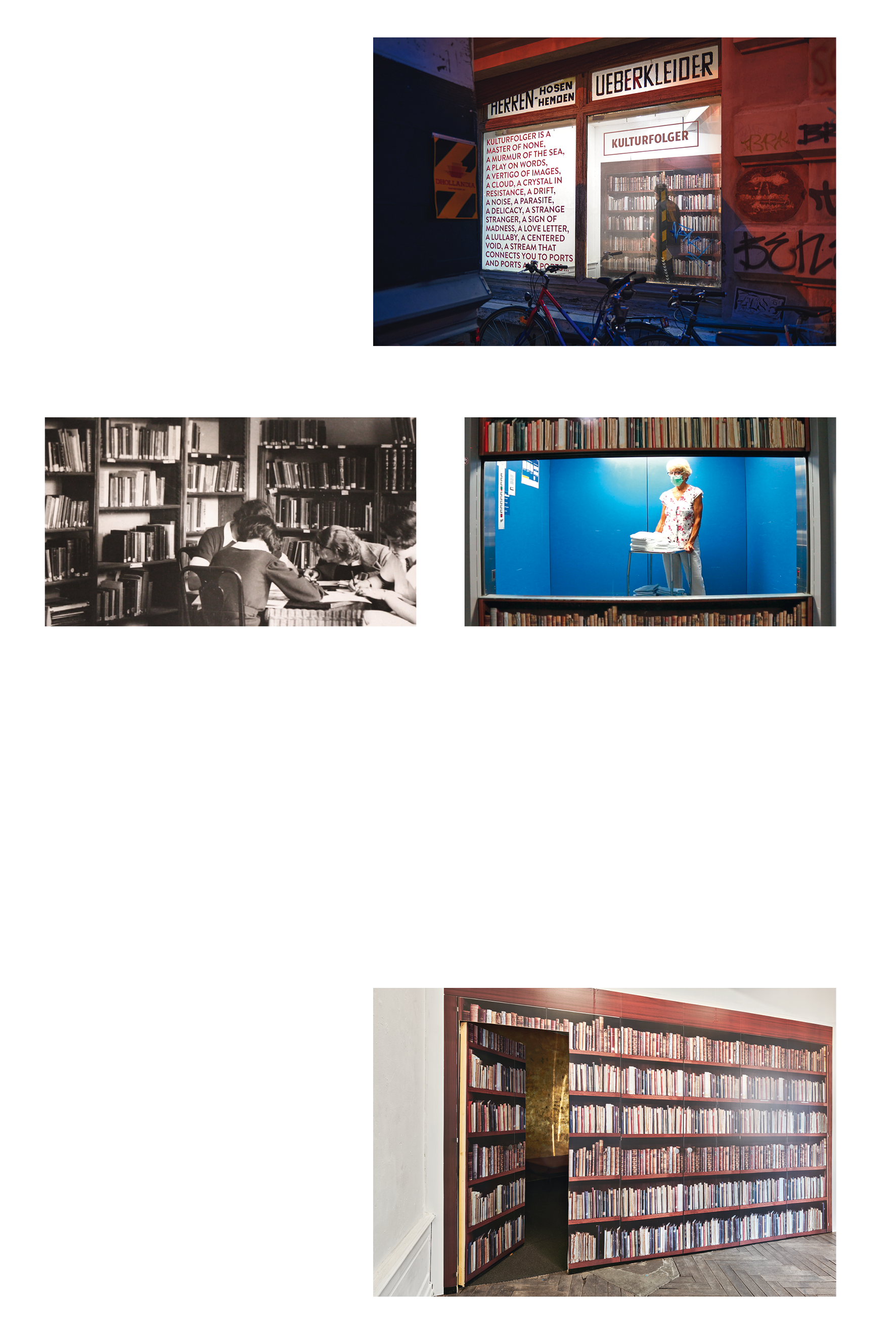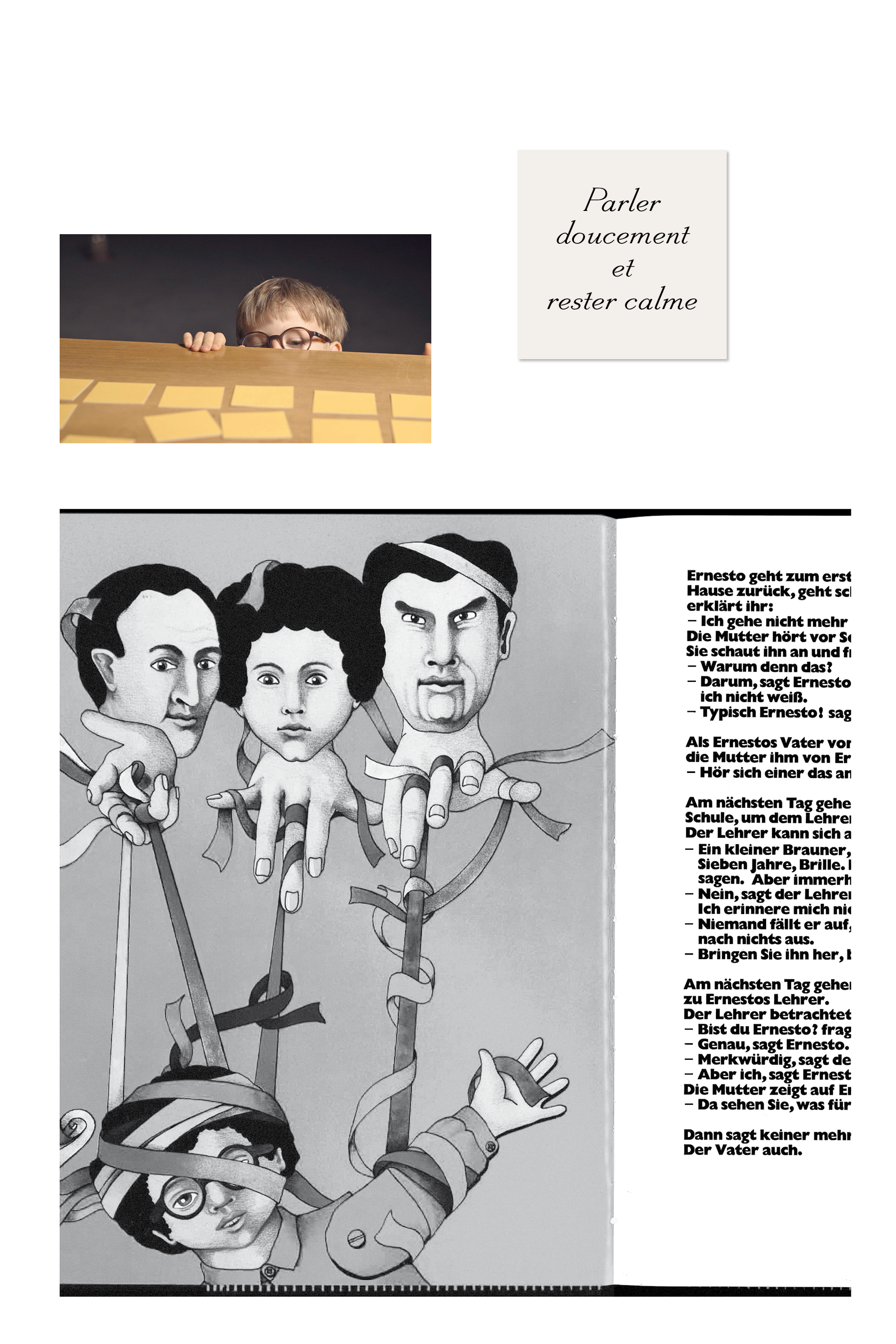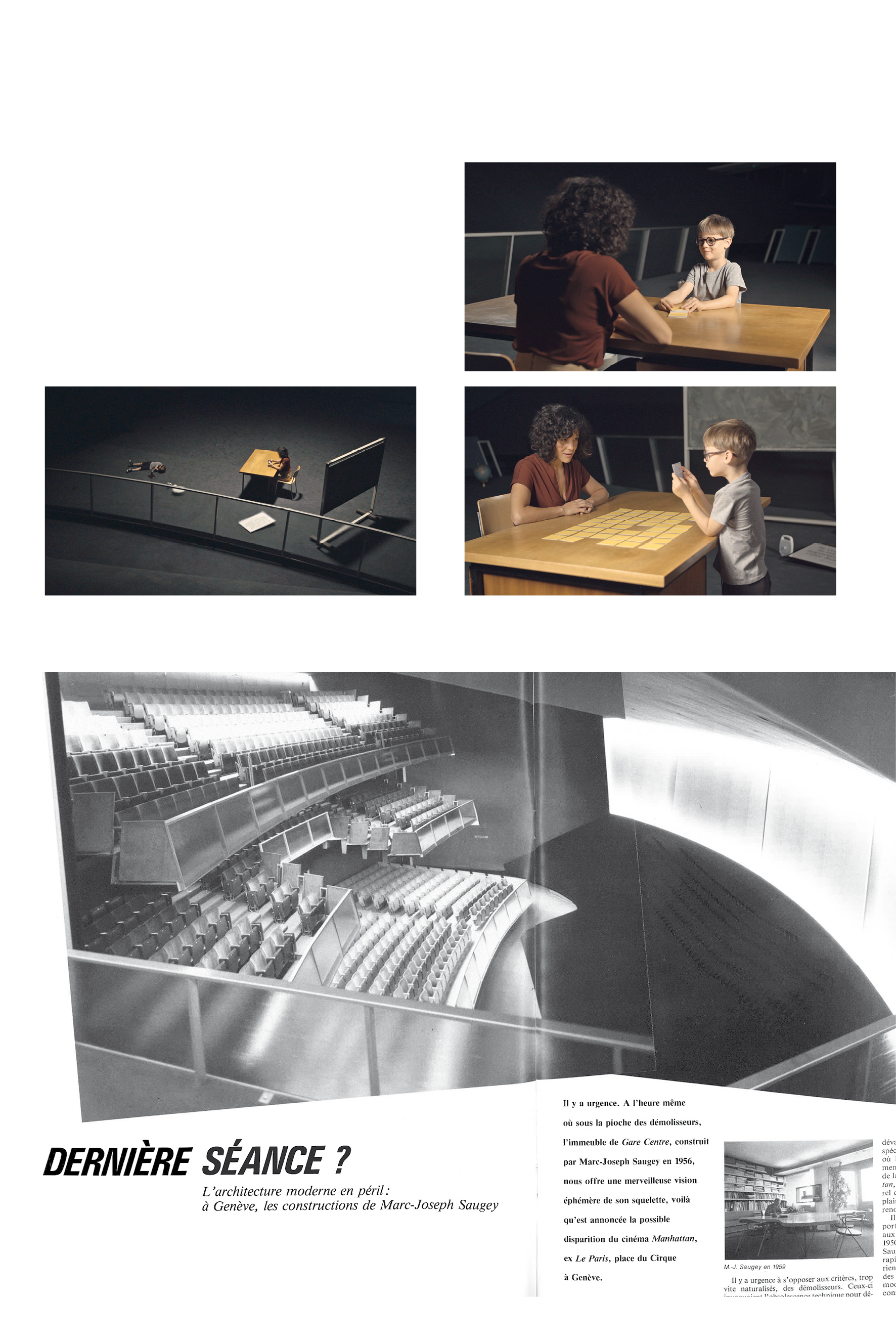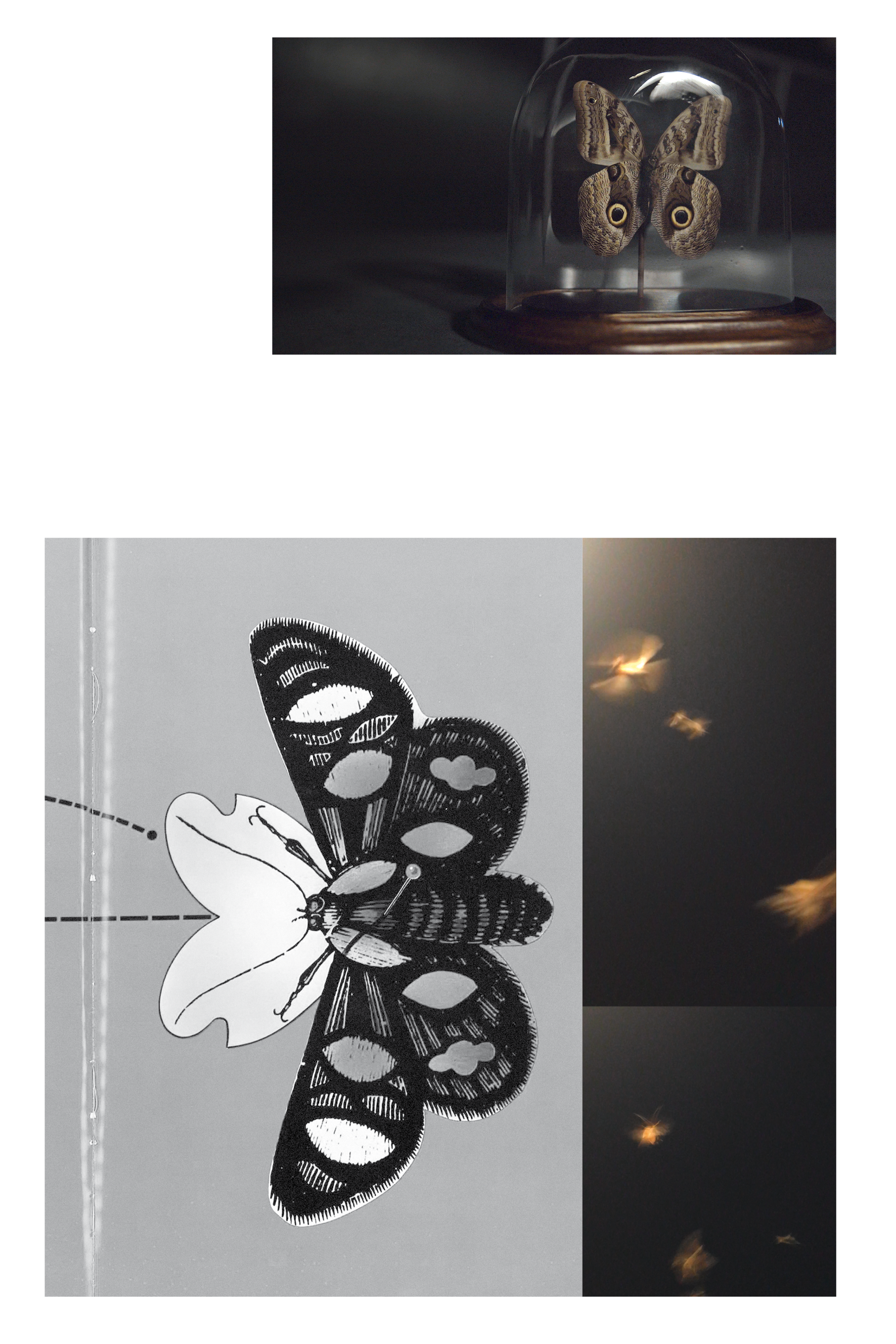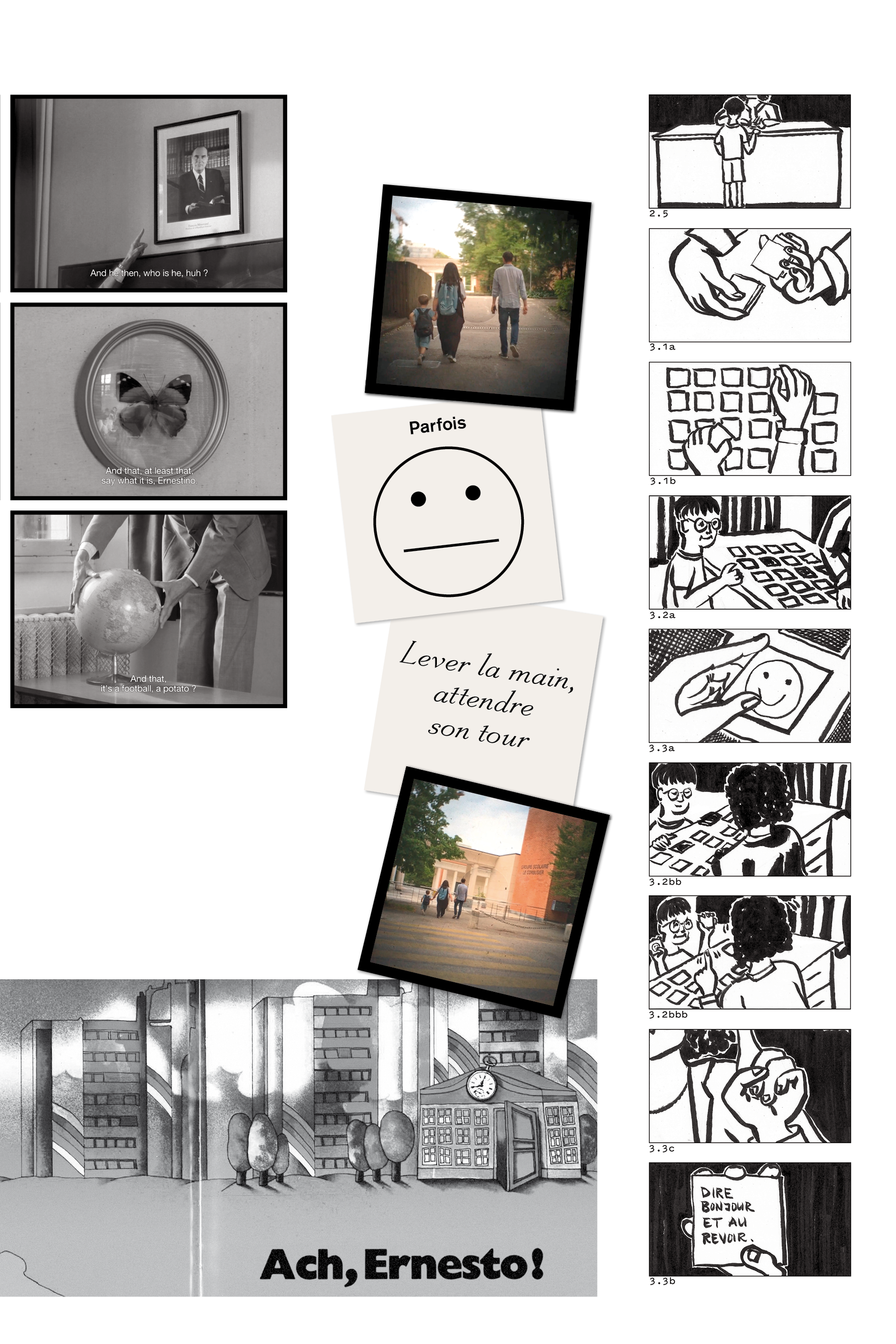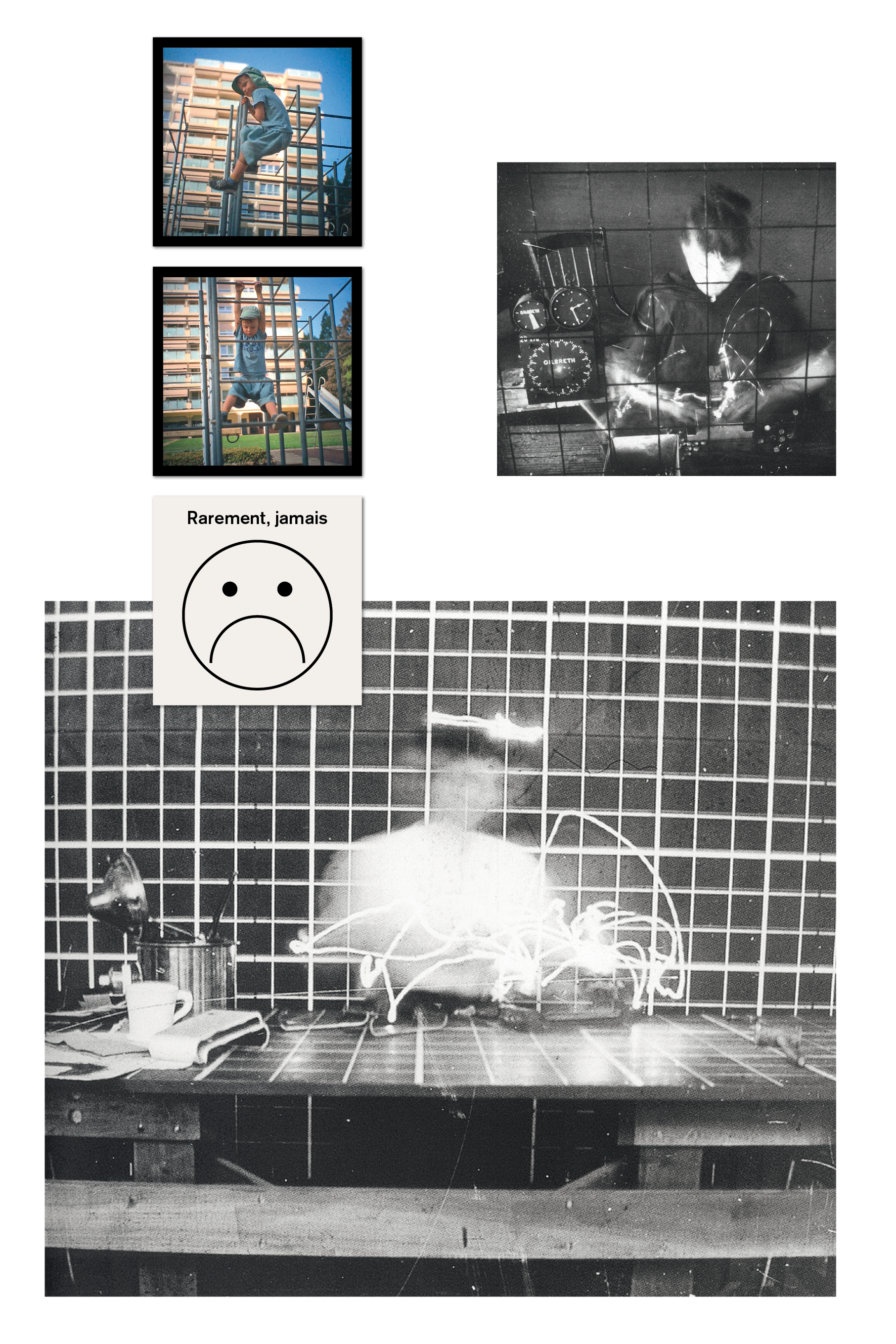Understanding the shooting of Jeux impairs as a dispositif to investigate roles, hierarchies and temporal regimes was part of its staging as an experiment. Jacob quickly understood that as an actor he had his own agency. The grown-up actor sat on a chair, and he stood opposite her on the other side of the office table. This places them at eye level, so that they have an overview of the cards from the same distance. The cards face towards Jacob and he is the focus of attention. He turns over a card with a film-still from the recordings we made more than a year earlier. He recognizes himself straight away, but there is also an element of the image which he cannot quite identify. He whispers: “It looks like a black hole! But why hasn’t it sucked me in?” The unknown has immediately caught his imagination and opened up a different temporal dimension. In this imaginary world, there are time machines, meteorites falling to earth, dinosaurs, and ninjas. From time to time, when he began to lose concentration on the card game, his gaze turned to the dark emptiness of the huge surrounding auditorium, as if this undefined space outside the scene were populated by countless invisible creatures.
He had brought his homemade lightsaber to the shoot. We had difficulty persuading him to leave it on a chair outside the frame during filming. Particularly in the moments when he once again became aware of the space outside the frame, he interrupted the game from one second to the next and quickly walked out of the shot. He grabbed the lightsaber and improvised a fight against an invisible opponent. Standing up, he had the freedom of movement to transform the cinematic space with his movements, to enter a different space by leaving the frame and using the lightsaber to bring in the surrounding darkness, attacking it and making it present.
I was interested in the way that Jacob’s attention shifted between the memory game and the invisible imagined world, which entails a different temporal mode. Broadly speaking, the actor and the card game stand for the temporal mode of rationality – a temporality which follows a purposeful logic. The lightsaber and Jacob’s escapes from the frame, on the other hand, embody a temporal mode of emotionality – a temporality characterized by intensity, effects and affects. One step in my process of working with the footage was to slow down the sequences with the lightsaber to an extreme degree. Through slow motion, I tried to intensify the breaks in linear temporality by stretching out emotional time and translating it into a “real-time of feelings.”86
I also chose the technique of slowing down the footage in order to devote more time to the power of the imagination, and to investigate the peculiarity of Jacob’s behavior. How do our perceptions of Jacob’s distraction techniques change when the footage is slowed down? Are they seen as a diversion, as a lack of concentration, or as an idiosyncratic way to divide his attention? To what extent do attention and distraction, as modes of perception, interlock through slow motion? Can the slow-motion effect cause a shifting sense of time in our experience of the film?
These experiments with slow motion resulted in an unexpected effect: the rest of the montage, which is cut to communicate cinematic real-time – that is, as if the memory game is playing out in front of the viewer’s eyes – felt incredibly slow. The game lasted almost two hours, but even when it was edited to just under 15 minutes of film, an impression of uninterrupted continuity is created, with ‘invisible’ cuts suggesting cinematic real-time. In mainstream media and film, real-time is rarely employed, for fear of seeming slow or boring. Cutting the film in such a way that it gives an impression of being slowed down, but without slow motion, moves the question of shifts in attention from the side of depiction to the side of reception. What happens ‘over time’ to the viewer’s attention, during the time in which the memory game takes place? Which details in the situation do we focus on? When do our thoughts wander? And what makes viewers begin to observe their own capacity to absorb information?
Alongside the set-up as a kind of chamber play and the strict framing, it is particularly the implied real-time which shifts the specific mode of perception into the foreground. For this reason, in the final version of Jeux impairs, I shortened the lightsaber intermezzos rather than lengthening them; like a kind of electromagnetic interference, these interruptions break into the reality of the film. Just for a few seconds, the frame rate slows, sometimes so briefly that our perception hardly has time to get a sense of the manipulation taking place. These ‘spectacular’ moments can therefore easily be missed.
In the world experienced by Jacob, empty interstitial spaces and dark hiding places come to be locations of lived asynchronicity. For instance, after the first day of school, he crawls into a pipe at the playground. He does not perceive time in terms of concepts, but in his physical actions in the space around him, as a space for movement, and in the restrictions on this movement. As I considered the experiment of staging Jeux impairs, certain aspects of empirical concepts of time became clearer to me from my filmic fieldwork with Jacob: he uses or creates leeway and loopholes to resist regulations, to withdraw from them, to hide from them [N is for Normality Principle]. His parents and his teacher defined a framework for his movements, as did I, the filmmaker. The brightly lit table with the cards set out in a dim theatre space forms the framework of the staging. The empty auditorium, which remains in shadow, holds the unknown, evading visibility, and becomes a space of possibilities, or a space in which things are made possible [T is for Tabletop, for Tricks, for Trust]. Two different temporalities reign in these two different worlds, and Jacob moves back and forth between them.
The experiment and the subsequent evaluation in the form of the short film Jeux impairs caused me to rework the playground sequence in the film-essay several times. In the core scene in the sequence, Jacob is sitting in the pipe, his legs propped up high, explaining that the school bell is rings for the start of work, but that he doesn’t work; instead, the teacher works on him and the other pupils. I wanted to show that his playing was a way of living in a different temporality, which differs from the time of learning as working hours [E is for Emoticons, for Evaluation]. After the experience of staging the memory game, it became clear to me that this sequence required a shift from documentary observation, in order to reflect Jacob’s mode of perceiving the time spent playing in a more nuanced way, or rather, to show that this mode of perception requires specific active physical participation. Rather than using shots of his parcour-like movements (climbing and jumping on all kinds of possible obstacles) to illustrate in documentary style how he ‘moves along by playing’, the montage restricts his activities to a single movement sequence – a jump in stop motion. 12 stills, each lasting several seconds, show how he jumps, falls, and gets up. Instead of quick, fluid movement, the sequence is fragmented into jerky excerpts, so that viewers can consciously follow the series of movements. In this sequence, two contradictory perspectives formed important visual references for me, both connected with the stuttering movements: on the one hand, there was a form of objectivization, as designed for the technique of motion capture in efficiency studies of work processes. Thanks to mechanical recording, all steps can be captured and evaluated – nothing escapes monitoring. On the other hand, there was a process of subjectivization, which arises when extreme situations are experienced and recalled. In such cases – for instance, when someone falls – temporal perception is drastically transformed: in moments of shock, many impressions are recorded in a short time, and fragments of seconds can seem very long.
The gap of missing frames recalls the fact that the film is being recorded through a hole (the camera shutter) and that moving pictures are always sequences of stills. Between these stills, something always escapes being recorded, but at the speed of 25 frames per second, the blackout time [D is for Denkraum, for Darkness] is invisible to human perception. The standstill and the interval between images provides our perceptions with an interim space and leaves room for associations with the jerky series of movements.
